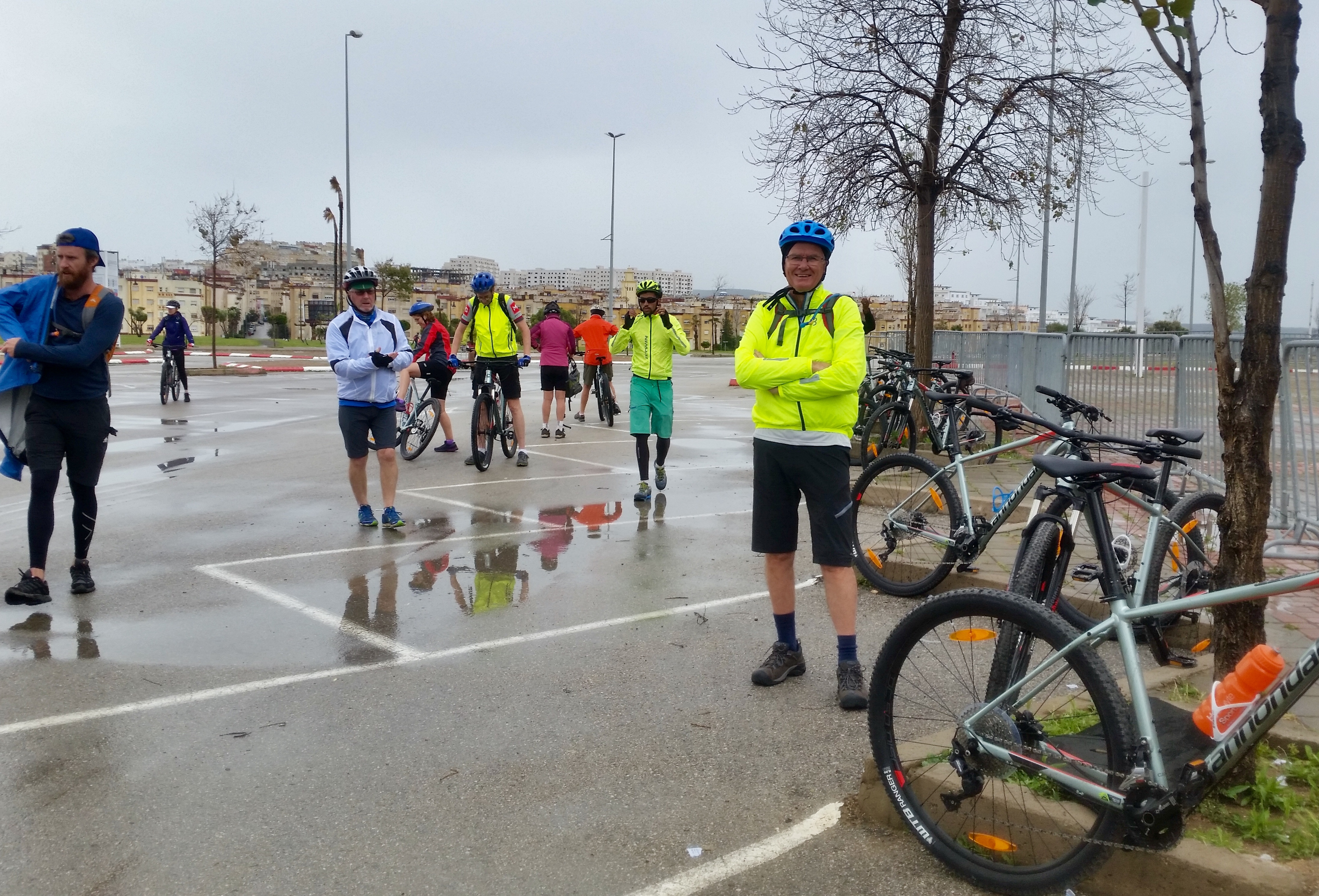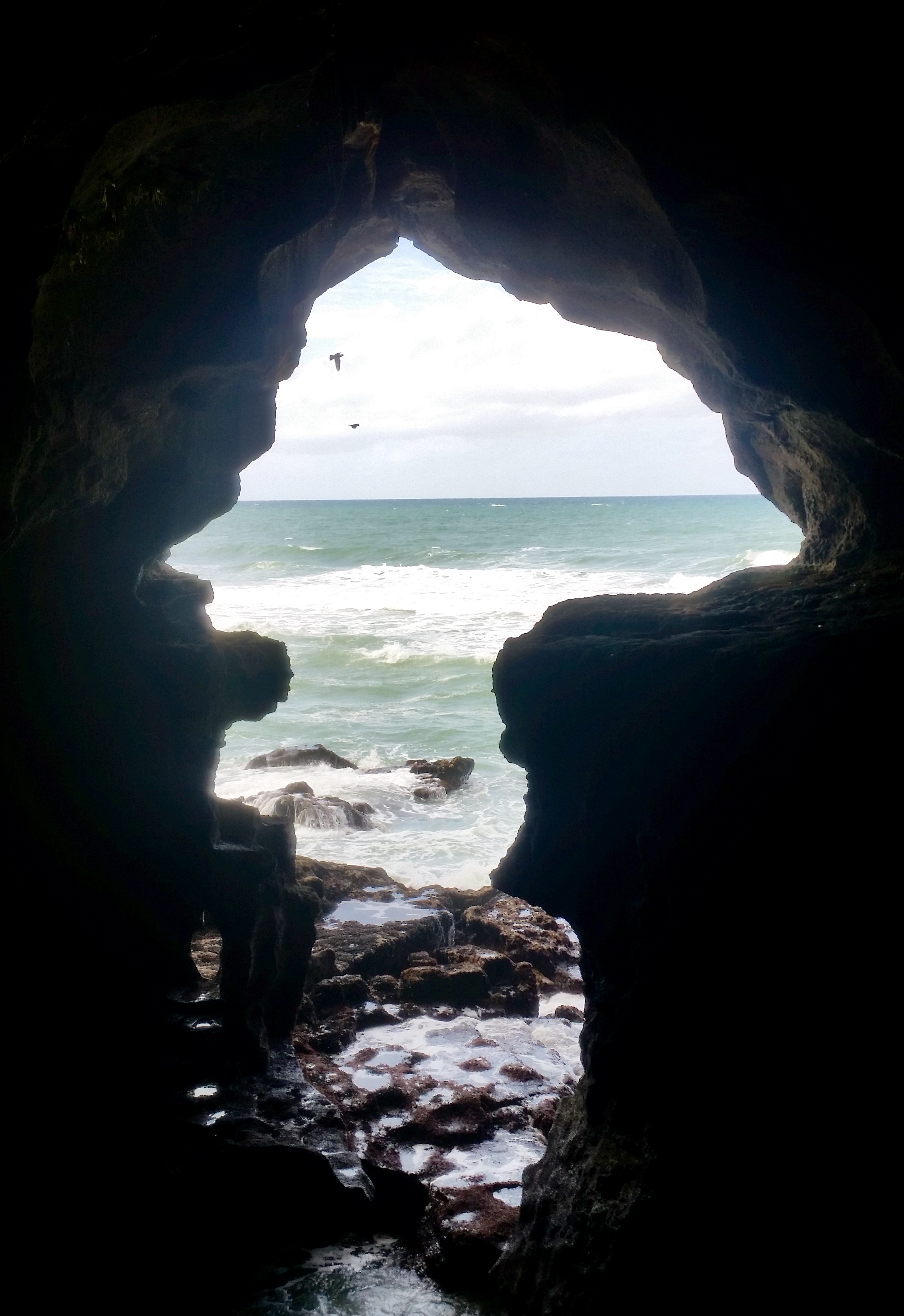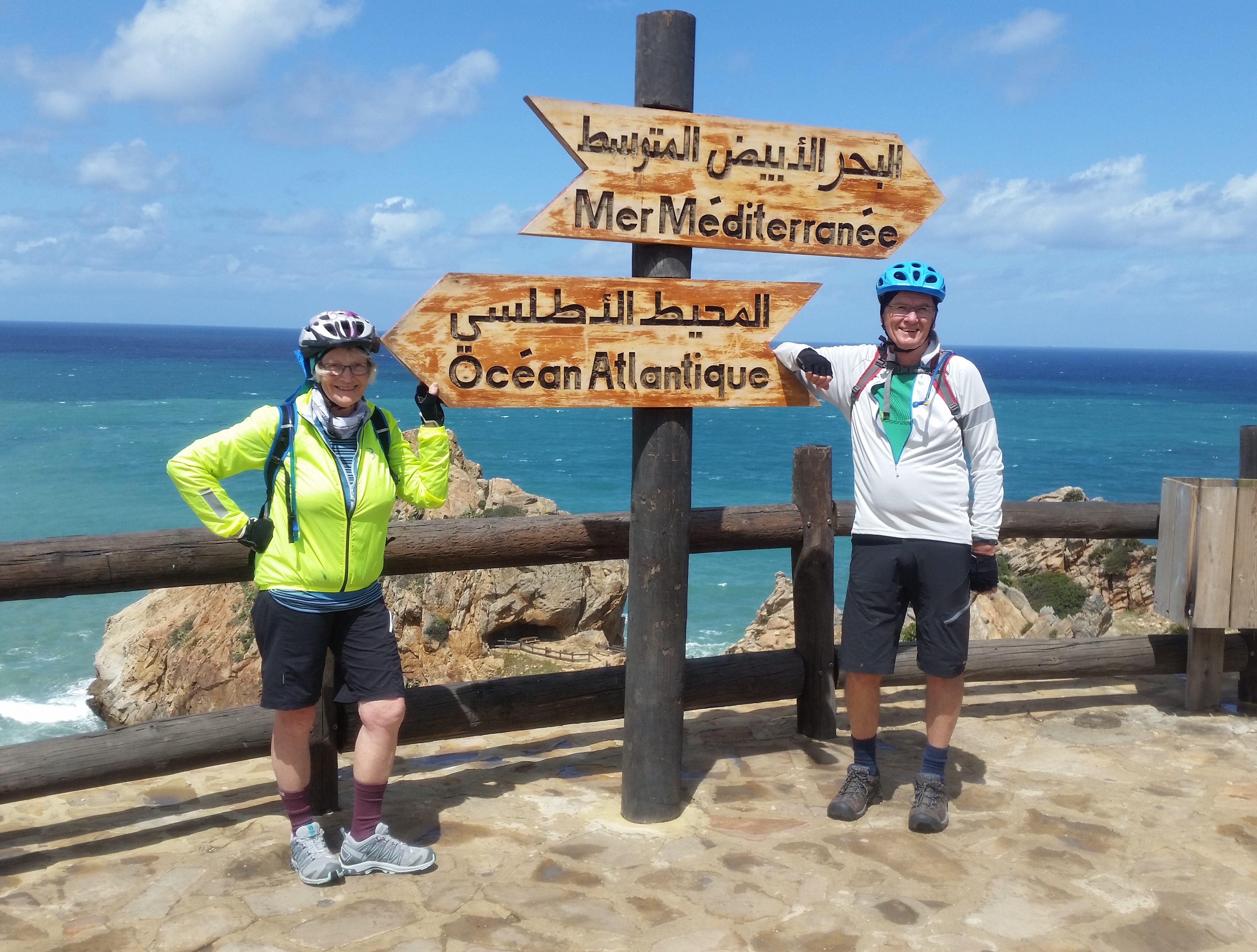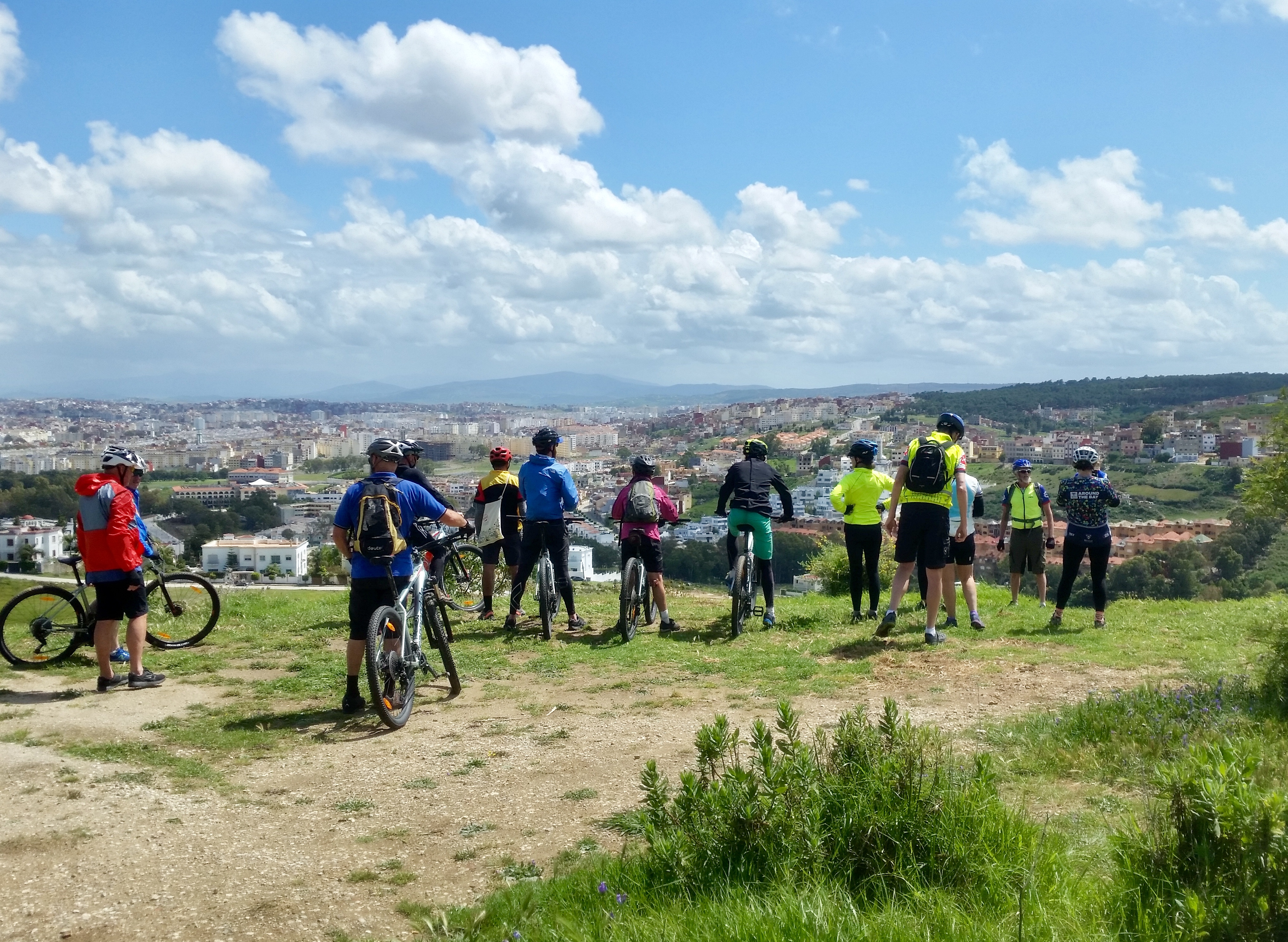OTAGO CENTRAL RAIL TRAIL

We have had many trips to New Zealand. My first one was in 1969/1970 on a student flight. Chris and I spent two months here as part of a long overseas trip. On these and subsequent trips the focus has always been on tramping, mainly in the South Island. On this trip, late September 2022 until late November 2022, Chris and I are here with our mountain bikes to do some of the South Island cycle trails. On our way from Christchurch to Wanaka we rode the top section of the Alps2Ocean with some great views of Mt Cook. We will return to complete this. Our first trail was the Otago Central Rail Trail.

Day 1 – Clyde to Omakau (with a short side trip to Ophir) 44 kms
An icy blast of cold air ripped across NZ two days before we started this ride adding fresh snow to the cover already there and dusting the lower hills. We spent a relaxed day driving in our van from Wanaka to Clyde where we organised a shuttle service to return Chris to our van and move it to a new location along the trail for the first two nights. The third night we planned to do the trail there and back and, for the final section, we would drive to the end point at Middlemarch and have the shuttle take us back to Ranfurly where we’d spend the night in a hotel before riding back to Middlemarch and our van. This was not the conventional way to do the trail, but as we had the van as accommodation, it suited us.
After a night of “freedom” camping we started out from the main street of Clyde. It was zero degrees and we were wearing four layers of clothing, however, the sun was shining and there was no wind.


After eight kilometres, on the outskirts of Alexandra, there was a cafe bustling with bike riders, road travellers and locals. It was great to thaw out with a flat white and warm carrot cake before riding on through dry, rocky scenery and following the Manuherikia River upstream. We eventually crossed the river, rode on to Chatto Creek and stopped at the station site to eat our lunch.




After leaving the river it was a gentle but steady climb up Tiger Hill to the highest point on this section of the trail. We stopped to read the information at the Ganger shed. The board read “Behind the shed with more wrinkles than a bunkhouse blanket, the Merton Hills fill the middle distance. Beyond the Mertons the distant giant schist outcrop is Leaning Rock marking the southern-most summit of the Dunstan Mountains.” The still air was filled with the quacking of geese flying overhead and landing on the dam in the foreground of this scene. Beautiful.


The final stretch was an easy downhill into Omakau. We added a short ride to the historic gold mining town of Ophir. Lots of old buildings including the still operational PO. Chris was picked up from Omakau and taken back to Clyde to retrieve our van. I waited in the sun, soaking it up after the cold of the last few days. Spent the night in a council campground on the edge of Omakau.

Day 2 – Omakau to Oturehua – 30 kms
Another extremely cold start. There was frost on the grass when we woke up but by 9.45am when we started riding from Omakau the temperature had risen to four degrees. The day was eventually warmer if a bit breezier than yesterday and we shared the trail with more other riders, mostly on e-bikes. We moved along at a cracking pace, maybe it was the idea of a coffee at the Stationside Cafe at Lauder a mere 7km from Omakau. Like the cafe at Alexandra yesterday, this outdoor cafe was busy. The coffee and date scone were worth the wait.




The next section of the trail was more dramatic. We crossed the Manuherikia River over a long high curved bridge and gradually climbed up into the Poolburn Gorge and through two long tunnels. It was a bit disorienting riding in the dark before the light at the end offered guidance. After the tunnels the trail crossed the impressive Poolburn Viaduct. So much labour to bring a railway through this landscape.







After the viaduct and tunnels it was gentle riding through the Ida Valley, a vast swathe of green paddocks with sheep, many of the ewes with lambs, often twins, many close to giving birth. Every time we stopped to take a photo the protective ewes would hurry their lambs away.
The trail flattened out as we approached Oturehua and, with more of a wind, it became a slog. The pie was tasty at the old Gilchrist’s Store and our accommodation at the quirky Crowsnest was just down the road. Chris was picked up again as arranged and I dozed in the sun with the Crowwnest’s owner’s dog, Jim.



Day 3 – Oturehua to Ranfurly and return – 54 kms
A warmer morning with more cloud. No shuttle back to our van today as the timing for the pick up seemed too late and we felt there and back to Ranfurly was within our comfort zone. What we hadn’t taken into consideration was the wind strength!
The trail was flat then rose up gently to the highest point at 618 metres. Other highlights, apart from the snow on the distant range, were the 45 south latitude marker and iron sculptures of the planets. These have been placed to scale along the trail and, because of their size, Saturn and Jupiter, made for impressive photos. From the highest point it was downhill to Ranfurly, passing the original station building at Wedderburn. A tail wind sped us on our way.







The price we paid for having a tailwind on the 25 km ride to Ranfurly was the headwind on the way back. It was hard going as the wind was strong and gusty and the trail was more uphill. We sheltered every 5 kms in the conveniently placed Ganger sheds just to have a break from the struggle. Even when we descended from the high point, we were still buffeted and had to keep peddling rather than coasting. It was a relief to be back at our van. We treated ourselves to an excellent meal at the Oturehua Hotel.
The next day we drove to the end of the trail at Middlemarch where we stayed the night in the caravan park. The shuttle drove us back to Ranfurly the next afternoon. Our plan was to ride the short distance from Ranfurly to Waipiata, stay the night at the hotel, then ride the final 52 kms to Middlemarch on Day 5.
Day 4 – Ranfurly to Waipiata (8 kilometres)
Easy riding with only a moderate headwind and then an enjoyable night in the Waipiata Hotel – great food and country charm.



Day 5 – Waipiata to Middlemarch (53 kms)
A cold and cloudy start after a substantial hotel breakfast with the prospect of some sunshine later in the morning and a trail that was mainly a gentle downhill. The most impressive section of the trail was following the Taipei River into the Taipei Gorge. The gorge is dry and rocky in contrast to the fertile green fields we’d been riding through. We also crossed the Prices Creek Viaduct and rode through the Prices Creek Tunnel.
Hyde Railway Station was a museum of railway history and was set up as it would have been in its heyday. Our rest stops all along the trail were mainly spent reading the comprehensive information boards in the reconstructed Ganger sheds or the preserved stations.











The final section of the trail follows the Rock and Pillar Range, known in Maori as Patearoa, meaning the long fortification. This is a popular cross country ski area in winter and was one of the original South Island ski fields – the train used to provide access although skiers then needed to climb up onto the range.
It was straight riding for the last twelve kilometres from Rock and Pillar Station to Middlemarch. It had even warmed up slightly. An enjoyable ride through impressive scenery with the bonus of comprehensive information about railway and farming history. As always, at the end, there’s the satisfaction of completing a journey.






























































































































































 The final week of cycling in Portugal unleashed a few more hot days before giving us the relief of a cool change. The terrain continued to be hilly and many of the villages were built around impressive castles and forts. The smaller villages often seemed like ghost towns, with a few elderly emerging to sit on a bench in the sun. No aged care facilities in this part of Portugal; we were the day’s excitement when we clattered across the cobblestones into the centre of these mazes, as if out of nowhere. The final leg of the journey took us into the Douro River valley which has a UNESCO World Heritage listing. Vila Nova de Foz Coa was the end of our journey.
The final week of cycling in Portugal unleashed a few more hot days before giving us the relief of a cool change. The terrain continued to be hilly and many of the villages were built around impressive castles and forts. The smaller villages often seemed like ghost towns, with a few elderly emerging to sit on a bench in the sun. No aged care facilities in this part of Portugal; we were the day’s excitement when we clattered across the cobblestones into the centre of these mazes, as if out of nowhere. The final leg of the journey took us into the Douro River valley which has a UNESCO World Heritage listing. Vila Nova de Foz Coa was the end of our journey.


































 Riding into wine country
Riding into wine country












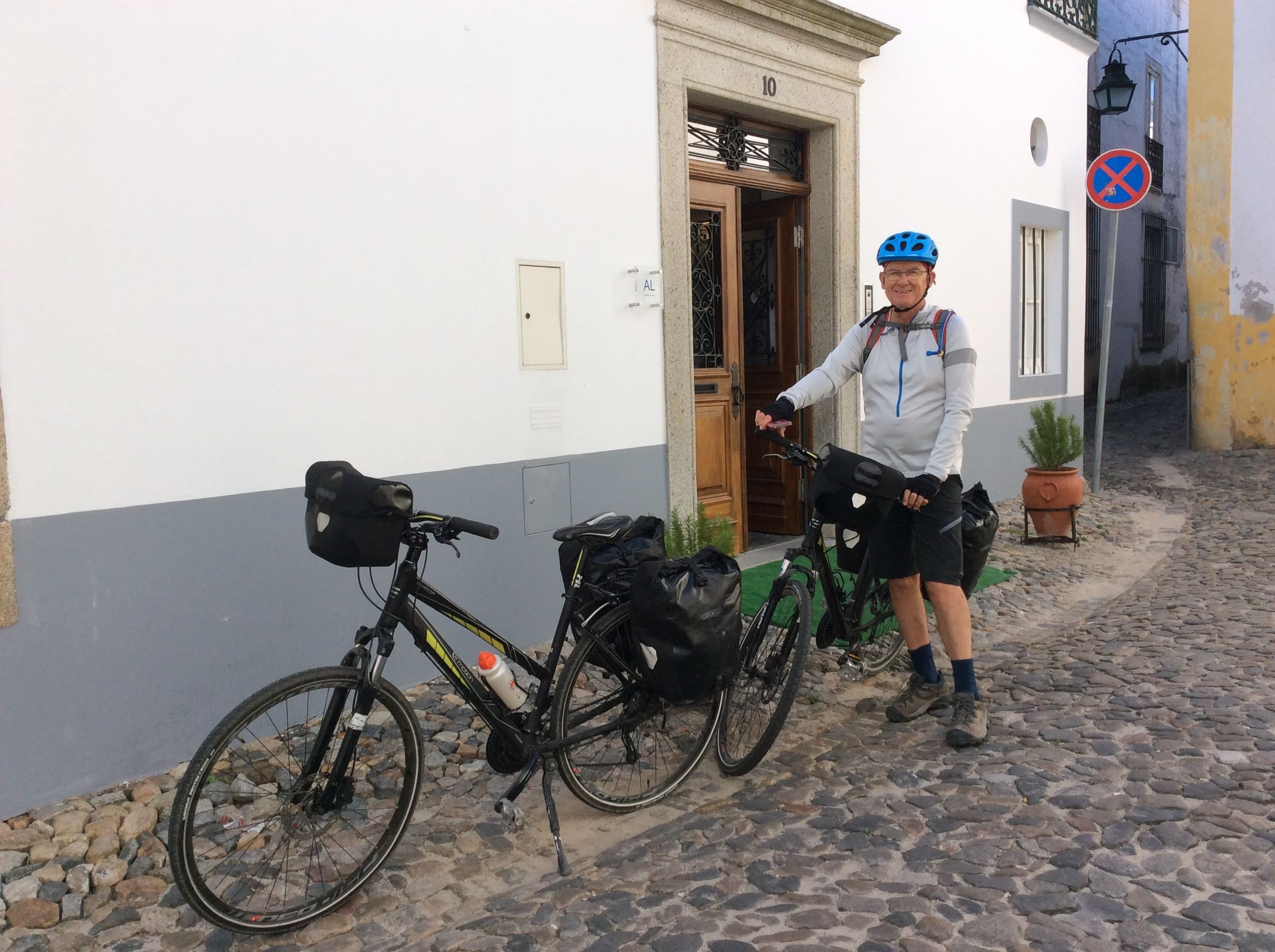

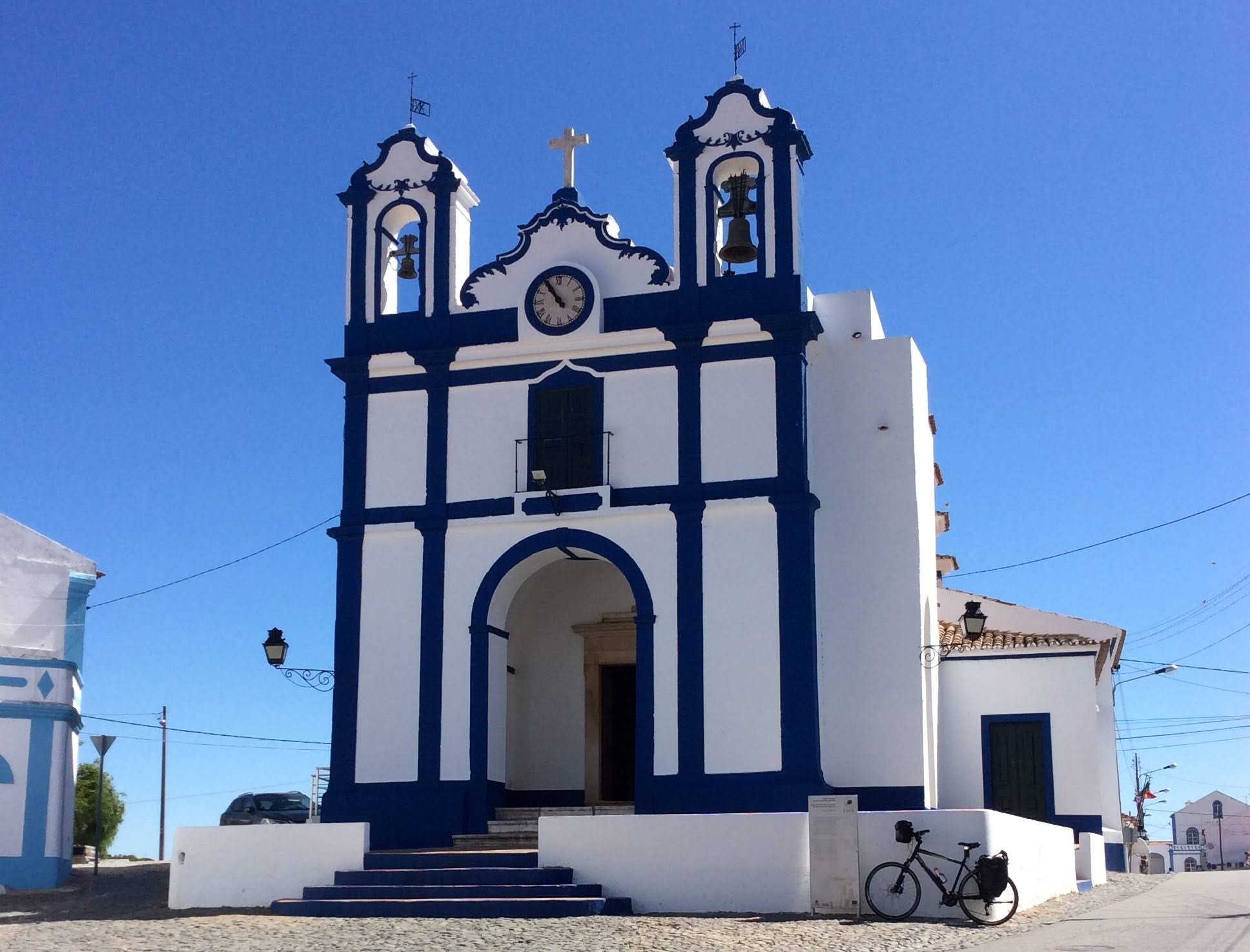
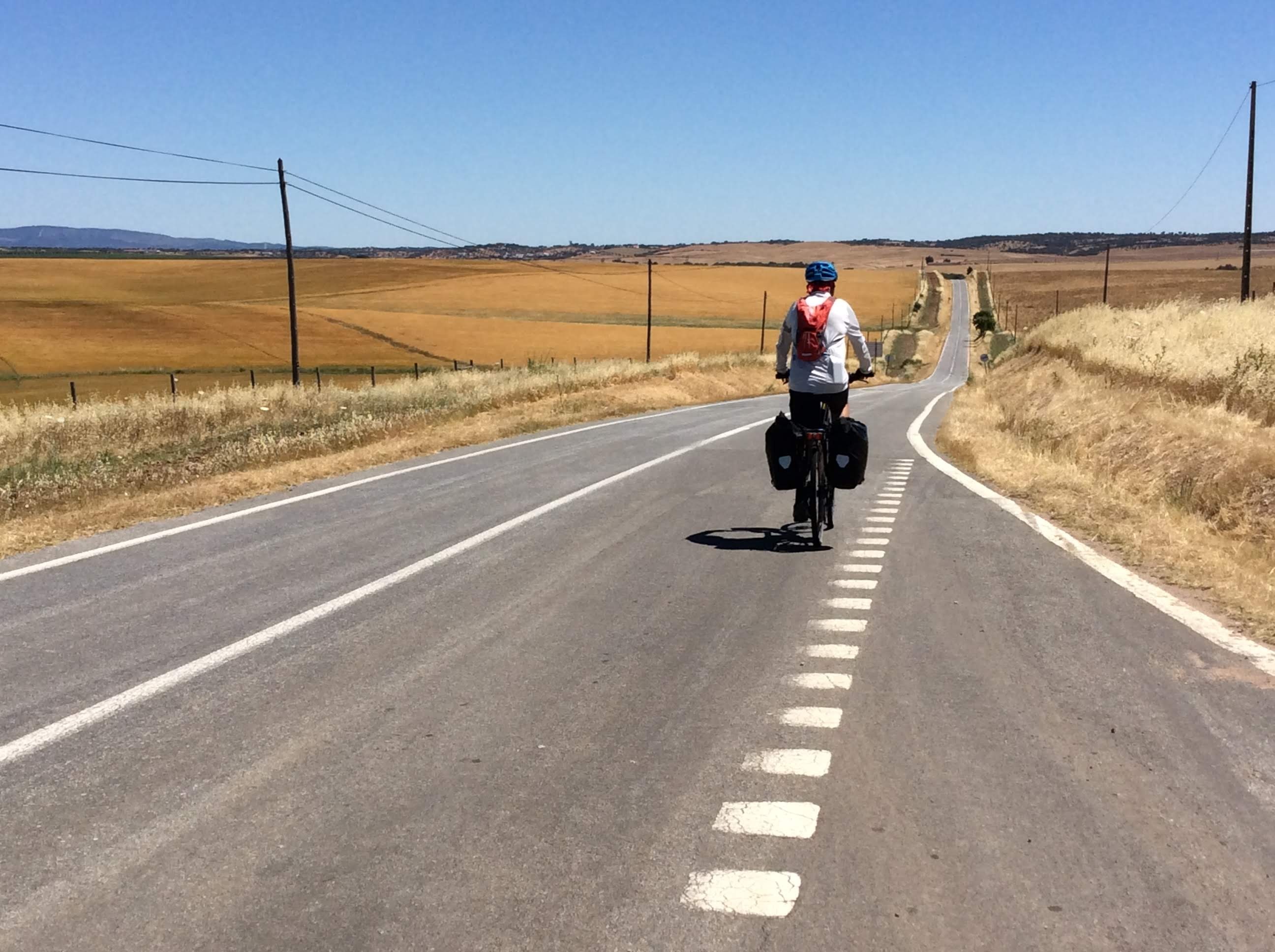












































 Loaded up
Loaded up A village on our first day
A village on our first day Resting at a lookout point – this area was a national park
Resting at a lookout point – this area was a national park
 Another high point – looking south
Another high point – looking south A Sunday market – barbecue and coffee for morning tea
A Sunday market – barbecue and coffee for morning tea The bike path matched the roofs – it only lasted for a kilometre
The bike path matched the roofs – it only lasted for a kilometre Getting a trim in Almodovar
Getting a trim in Almodovar The barber shop
The barber shop A small store and mural
A small store and mural Riding up the road to Fontes Barbaras
Riding up the road to Fontes Barbaras Fontes Barbaras – pool and a view of the vines
Fontes Barbaras – pool and a view of the vines




























































